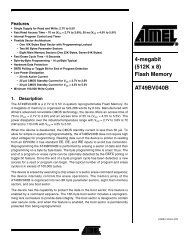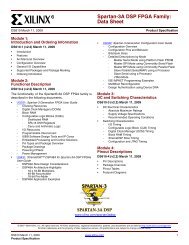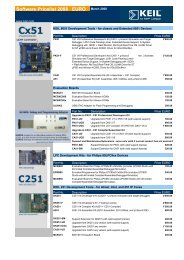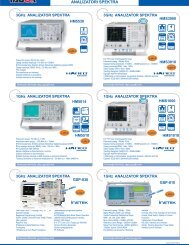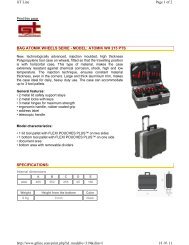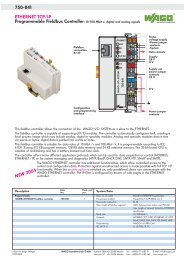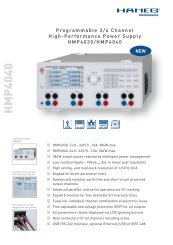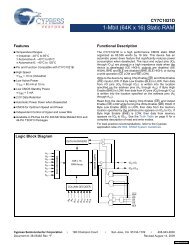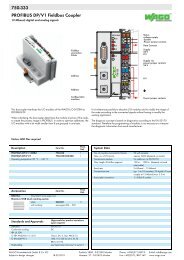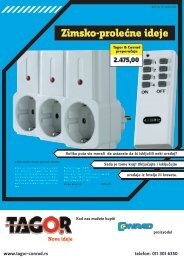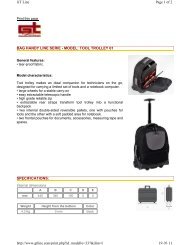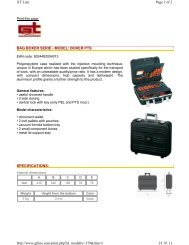PIC12F683 Data Sheet - Microchip
PIC12F683 Data Sheet - Microchip
PIC12F683 Data Sheet - Microchip
Create successful ePaper yourself
Turn your PDF publications into a flip-book with our unique Google optimized e-Paper software.
<strong>PIC12F683</strong><br />
12.0 SPECIAL FEATURES OF THE<br />
CPU<br />
The <strong>PIC12F683</strong> has a host of features intended to<br />
maximize system reliability, minimize cost through<br />
elimination of external components, provide power<br />
saving features and offer code protection.<br />
These features are:<br />
• Reset<br />
- Power-on Reset (POR)<br />
- Power-up Timer (PWRT)<br />
- Oscillator Start-up Timer (OST)<br />
- Brown-out Reset (BOR)<br />
• Interrupts<br />
• Watchdog Timer (WDT)<br />
• Oscillator Selection<br />
• Sleep<br />
• Code Protection<br />
• ID Locations<br />
• In-Circuit Serial Programming<br />
The <strong>PIC12F683</strong> has two timers that offer necessary<br />
delays on power-up. One is the Oscillator Start-up Timer<br />
(OST), intended to keep the chip in Reset until the crystal<br />
oscillator is stable. The other is the Power-up Timer<br />
(PWRT), which provides a fixed delay of 64 ms (nominal)<br />
on power-up only, designed to keep the part in<br />
Reset while the power supply stabilizes. There is also<br />
circuitry to reset the device if a brown-out occurs, which<br />
can use the Power-up Timer to provide at least a 64 ms<br />
Reset. With these three functions on-chip, most<br />
applications need no external Reset circuitry.<br />
The Sleep mode is designed to offer a very low-current<br />
Power-down mode. The user can wake-up from Sleep<br />
through:<br />
• External Reset<br />
• Watchdog Timer Wake-up<br />
• An interrupt<br />
Several oscillator options are also made available to<br />
allow the part to fit the application. The INTOSC option<br />
saves system cost while the LP crystal option saves<br />
power. A set of Configuration bits are used to select<br />
various options (see Register 12-1).<br />
Note:<br />
Address 2007h is beyond the user<br />
program memory space. It belongs to the<br />
special configuration memory space<br />
(2000h-3FFFh), which can be accessed<br />
only during programming. See<br />
“PIC12F6XX/16F6XX Memory Programming<br />
Specification” (DS41204) for more<br />
information.<br />
12.1 Configuration Bits<br />
The Configuration bits can be programmed (read as<br />
‘0’), or left unprogrammed (read as ‘1’) to select various<br />
device configurations as shown in Register 12-1.<br />
These bits are mapped in program memory location<br />
2007h.<br />
© 2007 <strong>Microchip</strong> Technology Inc. DS41211D-page 83



